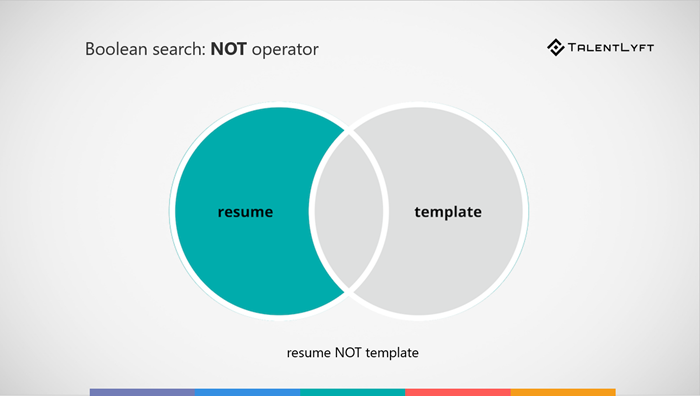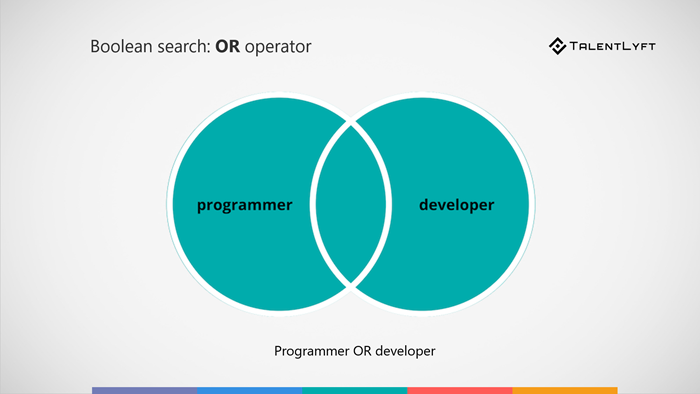
Every recruiter should know how to perform the Boolean search. Learning a few simple tricks will enable you to source better candidates faster. So what are you waiting for? Start reading our guide and get ready to master the art of Boolean search!
Every recruiter should know how to perform the Boolean search. Learning a few simple tricks will enable you to source better candidates faster. So what are you waiting for? Start reading our guide and get ready to master the art of Boolean search!
Imagine being able to find at least 20 perfect candidates in under half an hour!
And by perfect I don’t just mean candidates who have the right skills and experience. I mean real hidden gems.
Candidates who match the exact skills, experience and education required for a position you are looking to fill, live in a commutable radius, are likely to be happy with the compensation you offer and passionate about your company’s mission and vision.
Sounds crazy or impossible?
Well, it’s not.
Welcome to the wonderful world of using Boolean search in recruitment! 😊
Mastering the art of Boolean search will enable you to find that perfect candidate - even when it seems impossible.
➡️ Discover additional effective methods for finding top candidates: Download FREE eBook “The Ultimate Guide for Finding Qualified Candidates in 2019”.
These days, only 12% of people are actively looking for a job.

This means that recruiters must proactively source passive candidates in order to fill open job positions.
This is where the Boolean search comes in.
Boolean search is an advanced method of online search.
By using a Boolean search, recruiters can find better candidates faster.
You can apply the Boolean search to:
Source candidates on search engines like Google, Yahoo or Bing
Source candidates on social networks such as LinkedIn, Facebook, Twitter, Instagram, etc.
Search resume databases and professional directories more effectively
Retrieve forgotten resumes from an Applicant Tracking System.
All these sources are a huge repository of potential candidates. Instead of wasting time sifting through a ton of resumes and potential candidate profiles, with the Boolean search you can filter out suitable candidates quickly.
In a nutshell, a Boolean search is a process of combining keywords with other words (called operators) and symbols (called modifiers) in order to narrow down the search.
Still puzzled about this whole Boolean search thing? 😕
Boolean search enables recruiters to find exactly what they are looking for.
Let me illustrate it with an example.
Let’s say you are sourcing sales representative in London. Type in “sales representative resume London” in Google. What do you get?
A bunch of irrelevant results: job ads, resume templates and examples, recruiting agency websites, etc.

This search is completely useless.
But what happens when you apply Boolean search?
Let’s type in a very simple Boolean search string:

Now would you look at that! 😮 You get only resumes of potential candidates. Pretty cool, huh? 🙂
Let’s proceed by learning how to perform this crazy effective Boolean search magic! ✨
It’s quite simple actually. You go to Google, type in your keywords and add a few additional words and symbols to get more relevant results.
These additional words (called operators) and symbols (called modifiers) make up the foundation of the Boolean search.
Boolean search operators are used to combine or exclude the keywords.
There are 3 basic Boolean search operators:
If you add AND operator between your two keywords, the search results will show only results that include both of your keywords.

Useful tip: You can an ampersand (&) instead of typing in the word AND.
If you add NOT operator between your two keywords, the search results will show only results that contain the first keyword, but not the second one.

Useful tip: You can a minus symbol (-) instead of typing in the word NOT.
If you add OR operator between your two keywords, the search results will show results that include either of the two keywords or both of them simultaneously.

Useful tip: You can a vertical bar symbol (|) instead of typing in the word OR.
Each of the 3 mentioned Boolean operators should always be written in uppercase. Otherwise, they won’t work!
Boolean search query modifiers are symbols you can use to organize keywords and further refine your search.
There are 3 basic Boolean search operators:
Quotation marks are used when searching for exact phrase that consist of more than one word.
For example: "product manager"
Put an asterisk at the end of your keyword if you would like to include all of its variations.
For example: recruit* = recruiter, recruitment, recruiting
Parentheses are used are most commonly used to wrap OR search.
For example: Sales (director OR manager)
Here are 5 more useful tips and tricks that can help you create advanced Boolean search strings:
Use site search syntax if you want to limit your search to specific file type.
For example, you can search for word, text of PDF document formats.
Here is what the filetype syntax looks like:
filetype:pdf
filetype:docx
filetype:txt
Use site search syntax if you want to limit your search to specific website.
For example, if you want to search only a certain social network, you should type in the site search syntax before you enter your keywords:
site: linkedin.com
site: facebook.com
site: twitter.com
site: instagram.com.
Use title search syntax if you want to limit your search only to websites with certain keywords in their title.
Type in this syntax before entering your keywords:
intitle:
For example, if you want to search for websites that have keywords “resume” or “bio” in their title, you should type in:
(intitle:resume OR intitle:bio)
Use text search syntax if you want to limit your search only to websites with certain keywords in the text on the web page.
Type in this syntax before entering your keywords:
intext:
For example, if you want to search for websites that have keywords “resume” or “bio” in the text, you should type in:
(intext:resume OR intext:bio)
Use URL search syntax if you want to limit your search only to websites with certain keywords in their URL.
Type in this syntax before entering your keywords:
inurl:
For example, if you want to search for websites that have keywords “resume” or “bio” in their URL, you should type in:
(inurl:resume OR inurl:bio)
Want to learn more about the Boolean search and its use in recruitment?
I suggest you watch this video to learn some cool next-level sourcing tips straight from a sourcing guru Glen Cathey.
In this video, Glen will show you how to use Boolean search to find the best and most qualified candidates - rather than simply the ones who are easiest to find.
Our recruitment software TalentLyft has a powerful, machine learning powered sourcing solution as well as sourcing extension.

This means that you don’t have to bother with learning complicated Boolean search strings.
Leave it to TalentLyft to find the perfect candidates for you! 🙂








![[GUIDE] How to Segment Your Talent Pool](https://adoptostaging.blob.core.windows.net/article/0pOm3nwXhEm6SEPThfIO2Q.png?8619)

